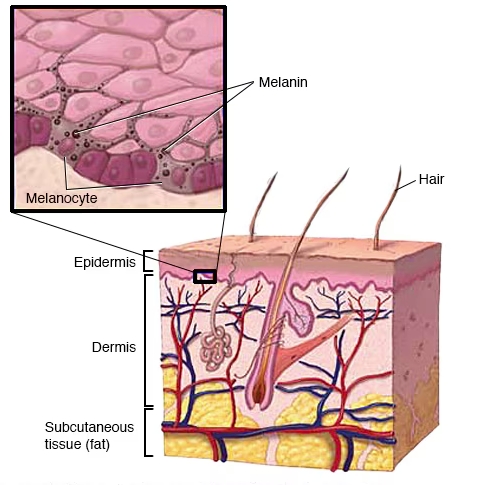
About vitiligo causese,symptoms and treatment
Vitiligo causes your skin to lose color or pigmentation. Smooth white or light areas called macules or patches appear on your skin. It generally starts on your hands, forearms, feet and face. Globally, about 1% of the population has vitiligo.
What causes vitiligo?
Vitiligo occurs when pigment-producing cells (melanocytes) die or stop producing melanin — the pigment that gives your skin, hair and eyes color. The involved patches of skin become lighter or white. It's unclear exactly what causes these pigment cells to fail or die. It may be related to:
A disorder of the immune system (autoimmune condition):Your immune system mistakes healthy cells (melanocytes) as foreign invaders like bacteria that can cause harm to your body. This makes your immune system overreact and develop antibodies to destroy your melanocytes.
Family history (heredity):A genetic mutation or a change to your body’s DNA can affect how your melanocytes function. There are over 30 genes that can increase your risk of developing vitiligo.
Stress: The amount of pigment your melanocyte cells produce may change if you experience frequent emotional stress or physical stress on your body, especially after an injury.
Environmental triggers: Factors like ultraviolet radiation and toxic chemical exposure can affect how your melanocyte cells function.

What are the symptoms of vitiligo?
Signs and symptoms of vitiligo include:
Patchy loss of skin color, which usually first appears on the hands, face, and areas around body openings and the genitals
Premature whitening or graying of the hair on your scalp, eyelashes, eyebrows or beard
Loss of color in the tissues that line the inside of the mouth and nose (mucous membranes)
Vitiligo can start at any age, but usually appears before age 30.
Depending on the type of vitiligo you have, it may affect:
Nearly all skin surfaces. With this type, called universal vitiligo, the discoloration affects nearly all skin surfaces.
Many parts of the body. With this most common type, called generalized vitiligo, the discolored patches often progress similarly on corresponding body parts (symmetrically).
Only one side or part of the body. This type, called segmental vitiligo, tends to occur at a younger age, progress for a year or two, then stop.
One or only a few areas of the body. This type is called localized (focal) vitiligo.
The face and hands. With this type, called acrofacial vitiligo, the affected skin is on the face and hands, and around body openings, such as the eyes, nose and ears.
How is vitiligo treated?
The choice of treatment depends on your age, how much skin is involved and where, how quickly the disease is progressing, and how it's affecting your life.
Common treatments for vitiligo include:
Medications.